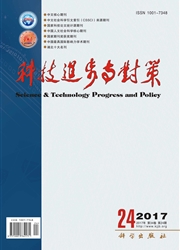

 中文摘要:
中文摘要:
随着服务经济的兴起,生产性服务业在经济发展中的作用凸显,但目前我国生产性服务业发展还存在地区不平衡等问题。利用最小二乘(OLS)模型,识别出经济开放程度、外商直接投资(FDI)和工业化水平三大影响生产性服务业发展的因素,及其效应和作用程度。但是由于我国东中西三大区域生产性服务业发展的差异,采用地理加权回归(GWR)模型更能体现空间不平稳性和局部特性。实证研究结果表明,GWR模型比OLS模型的拟合程度更优,说明我国生产性服务业发展存在明显的区域不均衡,3个因素对全国各省份的影响程度也不尽相同。总体来说,经济开放程度和FDI对中西部省份的生产性服务业发展分别有更强的正向和负向作用,而工业化水平对东部省份的生产性服务业有着更明显的负向影响。
 英文摘要:
英文摘要:
With the development of service economy, the roles of producer services in economic development have been more and more important. But recently, there exits problems such as unbalanced development in various regions in the productive service enterprise in China. By the way of OLS (ordinary least squares), we can recognize the effects and the effect degrees of three main factors that come from the degree of economic openness, FDI and industrialization. However, because of the difference of three main regions' producer services level of development, using the model of GWR (Geographically Weighted Regression) is more able to embody space instability and local quality. Empirical research manifests the model of GWR is better than the model of OLS, which indicates the existence of region unbalance during the development of producer services; and three different factors have different impacts on the development of producer services. In general, the degree of economic openness or FDI more stronger positive or negative influences to the development of the central and western provinces producer services, while industrialization is more evidently negative impacts on the eastern provinces.
 同期刊论文项目
同期刊论文项目
 同项目期刊论文
同项目期刊论文
 Single machine scheduling of deteriorating jobs to minimize total absolute differences in completion
Single machine scheduling of deteriorating jobs to minimize total absolute differences in completion A coordination contract based on real-option for risk management in a retailer-led supply chain with
A coordination contract based on real-option for risk management in a retailer-led supply chain with 期刊信息
期刊信息
